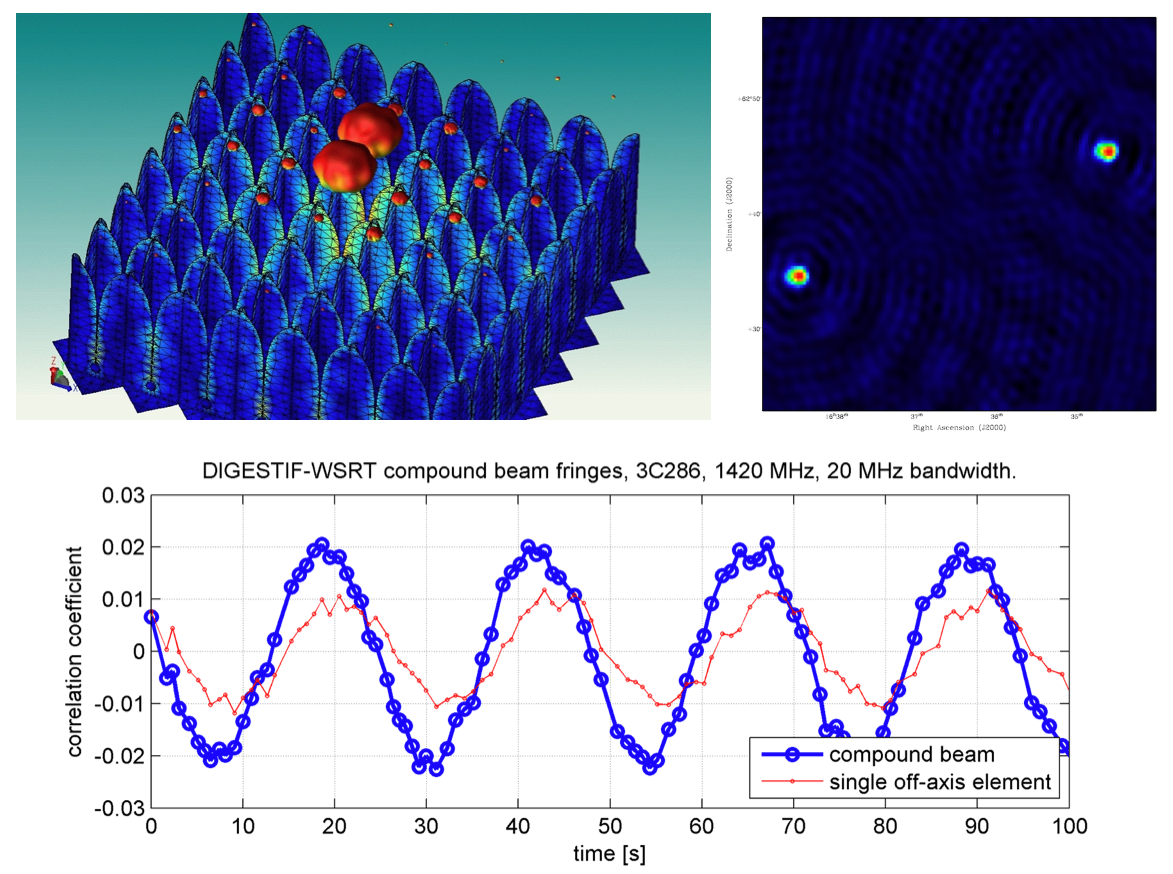Daily Image
20-02-2009First synthesis image using an FPA compound beam
| Submitter: | Wim van Cappellen, George Heald, and Marianna Ivashina for the Apertif team |
| Description: | In recent episodes of AJDI, we have presented the first synthesis images produced using individual elements of a Focal Plane Array (FPA). Using the Digestif test system at WSRT, we were able first to find interferometric fringes, then produce complex visibilities, and use the visibilities to generate a synthesis image. By repeating this process for several individual elements of the Digestif array, we confirmed that the recovered sky brightness distribution varied as expected due to the differing response patterns of the elements. FPAs take advantage of this variable response across the field, by combining the signals from individual elements in an optimal way. The combination of all of the individual elements is referred to as a compound beam. We are proud to present the first synthesis image produced using such an FPA compound beam. The data set used to produce the image in the upper right is the same as has been used to produce the earlier single-element synthesis images (it is the venerable 3C343 field; see AJDI 4/2/2009 and 10/2/2009). The image in the upper left shows (in bubble form) the response pattern of each individual element in the Digestif array. The size of the bubble indicates the weight corresponding to that element when used to produce an on-axis compound beam (as we have done here). The bottom image shows the interferometric fringe measured on a 144-meter baseline, for a single Digestif element combined with the MFFE installed on RT4 (red trace), and the same for the compound beam combined with the MFFE (blue trace). In producing the compound beam, the combination of the multiple FPA elements optimizes the aperture efficiency while minimizing spill-over noise. This results in a compound beam fringe amplitude which is approximately twice the single element fringe amplitude. The weights applied to the signals from the individual elements can be adjusted to optimize the compound beam for different applications. In the present case, the optimization is intended to maximize the on-axis signal-to-noise ratio. Later, when many WSRT antennas are equipped with FPAs, we will be able to form multiple overlapping compound beams simultaneously, greatly increasing the instantaneous field of view of the array. This is one of the technologies which have been proposed for use in building the SKA. The future of radio astronomy has arrived! |
| Copyright: | ASTRON |
| Tweet |  |
